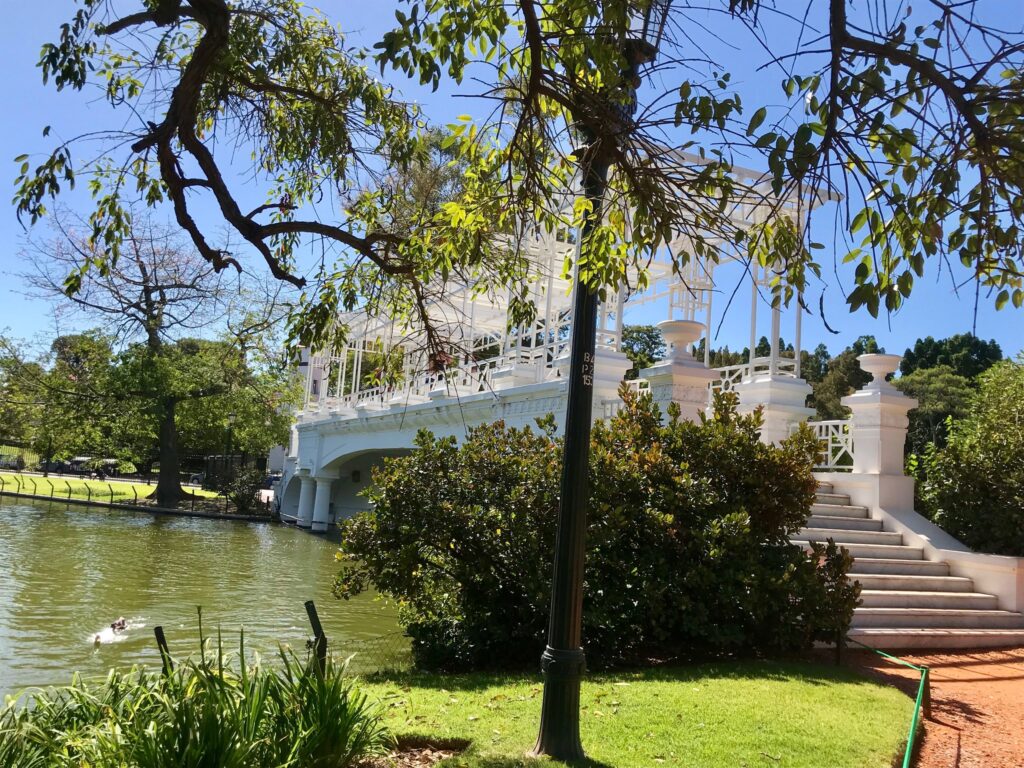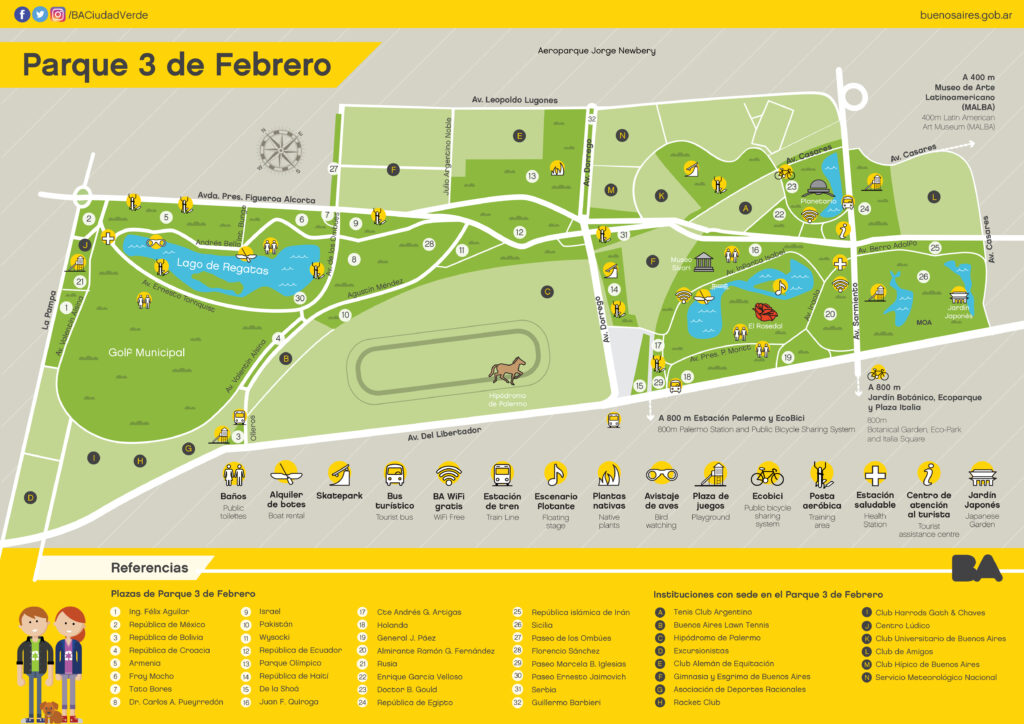Buenos Aires is a city where green spaces are distributed throughout the different neighborhoods, but not concentrated in a single area. Among them, the Parque 3 de Febrero stands out, located in the Palermo neighborhood and one of the most important in terms of tourism and recreation.
The Parque 3 de Febrero is a set of squares, parks, lakes and paths where thousands of neighbors and tourists converge. The most common activities are exercise, sports and picnics, without forgetting that in the surroundings there are other tourist attractions.
Here we tell you everything you need to know about the Parque 3 de Febrero: where it is located, what its characteristics are and how to get there to visit it on your trip to Buenos Aires.
Parque 3 de Febrero (Buenos Aires): All the information you need for your visit
What is Parque 3 de Febrero in Buenos Aires?
Parque 3 de Febrero is one of the most significant green lungs of Buenos Aires, alongside other notable areas like the Ecological Reserve, the Ecoparque, and Parque Sarmiento. Contrary to popular belief, Parque 3 de Febrero isn’t just a single large park—though it can be considered as such—but rather a collection of parks that include groves, lakes, and a rose garden.
Inaugurated in 1875, the park’s design featured contributions from the iconic Argentine landscape architect Carlos Thays. The park is home to important monuments and sculptures, as well as various institutions, mainly sports-related, including the Planetarium, the Palermo Hippodrome, Buenos Aires Lawn Tennis, and more.
Within Parque 3 de Febrero, you’ll find the Japanese Garden and the Sívori Museum. The park is a popular spot for both locals and tourists, who explore it on foot or by bike. In addition to the green spaces filled with trees and flora, the area is crisscrossed by avenues and streets primarily designed for cyclists and athletes.
The park’s three artificial lakes offer the opportunity for boat rides, and birdwatchers will find it an excellent spot to observe over 170 species. The park’s areas, such as plazas, walkways, and the iconic Rose Garden, are free to access, and the park covers a total of 370 hectares.

Where is Parque 3 de Febrero?
Parque 3 de Febrero is located in the northern part of the Palermo neighborhood in Buenos Aires. It sits south of the Costanera Norte and Buenos Aires Aeroparque, northwest of the Recoleta neighborhood, and southeast of the Belgrano neighborhood.
The park is surrounded and intersected by major north-south and east-west avenues, including Sarmiento, del Libertador, Figueroa Alcorta, Int. Bullrich, and Casares. Nearby attractions include the Japanese Garden, the Monumento de los Españoles, the Galileo Galilei Planetarium, the Buenos Aires Ecoparque, and other tourist spots.
How to Get to Parque 3 de Febrero?
Getting to Parque 3 de Febrero is easy via public transportation. Its strategic location and vast size make it accessible by bus, train, or subway. Numerous bus lines run near the park, including 10, 34, 37, 67, 102, 130, and 160.
For those taking the subway, line D has a station (Palermo) on Santa Fe Avenue, just six blocks south of the park. Remember, you can switch subway lines at certain stations without having to pay for another ticket.
If you’re coming from a greater distance, the train is also an option. The Mitre line has a station (3 de Febrero) just a few meters from the park.
A perfect way to reach Parque 3 de Febrero is by bicycle. As one of Buenos Aires’ most important green spaces, the area is ideal for cycling and offers a ride free of obstacles.

Why Visit Parque 3 de Febrero?
Practice Sports
Parque 3 de Febrero is one of the best areas in Buenos Aires for outdoor sports. Whether you’re running, doing group exercises, or simply walking at a relaxed pace, the park offers an environment perfectly suited to these activities. You’ll also find several “aerobic stations” with equipment for exercises like pull-ups, push-ups, and sit-ups.
Enjoy a Bike Ride
The park is a top choice for cyclists, not just for the beautiful green environment but also because many exclusive bike lanes run through or around the park. This makes it easy to arrive by bike and enjoy riding around the area, whether as part of a fitness routine or for leisure. Dedicated bike lanes can be found on Dorrego, del Libertador, Belisario Roldán, Figueroa Alcorta, and Valentín Alsina avenues.
Picnic by the Lake
Any postcard of Parque 3 de Febrero will likely feature its lakes as the main attraction. The park boasts several bodies of water, some of which are navigable by boat, while others are simply for viewing. It’s common to spot families of birds like ducks and swans. A great way to enjoy the park is by setting up a picnic by the lake, breathing in the fresh air to refresh both body and mind.
Explore Nearby Attractions
Parque 3 de Febrero is not only a tourist attraction itself but is also surrounded by other interesting places to visit. The Japanese Garden, the Planetarium, the Sívori Museum, the Costanera Norte, the Palermo Hippodrome, the Botanical Garden, the MALBA (Latin American Art Museum of Buenos Aires), the Ecoparque, and many more are within easy reach.
Any plan to visit Parque 3 de Febrero should definitely include these nearby attractions to make the most of your trip.
(Featured Image Source: Sergio Vásquez/flickr.com)


